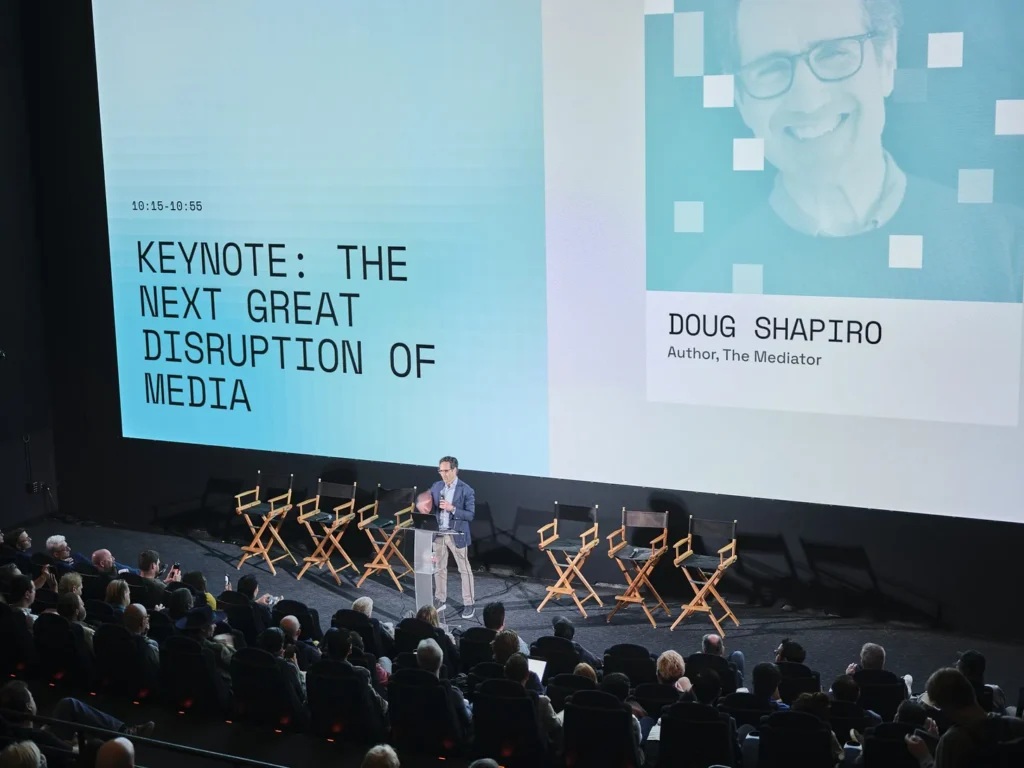
In today’s AI landscape, the ground shifts fast—faster than even the most seasoned technology founders are prepared for. The core problem?
The model is eating the product.
The core issue in today’s AI landscape is that foundational models—like those from OpenAI, Anthropic, DeepMind, LLaMa and xAI—are evolving so quickly that they have the potential to absorb entire product categories before startups can launch.
Obsolete Before Launch
Foundational models are evolving so rapidly that entire startups—especially in generative AI—can become obsolete before their products even launch. It’s no longer just about building something clever on top; it’s about anticipating when the base layer will do it better, and for free.
Traditional SaaS tools provided consumers and businesses with specific functionality that allowed their customers to do things like schedule social media posts, manage their receipts or customer relationships are under threat from the agentic capabilities that advanced AI promises.
What once required a specialized app built using lines of code, can now be done via prompt: voiceovers, legal drafting, image generation—features that startups spend months building become default capabilities of the base model, often free and instantly scalable.
Collapse of the Infrastructure / Application Divide



This collapse of the infrastructure/application divide means that to survive, startups must anticipate what the model will do next, avoid feature-level commodification, and differentiate through data, distribution, or highly specific use cases the model hasn’t yet generalized. The promise (or threat) of AGI (artificial general intelligence) means that soon the AI will be able to do everything a person can. Combine this with agentic capabilities (the ability to get ‘agents’ to perform tasks like booking travel etc.) and you’ve got a formula for a mass startup extinction event.
For example, Imagine building a startup that generates high-quality voiceovers for creators—custom tone, pacing, even emotional nuance—only to watch a new foundational model release a free API that does the same thing, instantly and at scale. Or consider a legal tech startup offering contract generation tools with compliance checks, just as a general-purpose LLM gains the ability to draft legally sound documents and flag risks with simple natural language prompts. In both cases, the base model absorbs the startup’s value prop before it even gets to market.
Other Key Strategic Considerations
This inflection point in our technological history is one of the most profound, making the process of building a startup both more urgent and more precarious. While the landscape has shifted dramatically—fueled by foundational models that evolve at breakneck speed—two core strategic levers remain the same: timing and tempo.
These aren’t just buzzwords. Timing is about market entry, product readiness, and signal interpretation. Tempo is about momentum—how fast you move once committed, and how aggressively you scale. Together, they govern your runway, which is no longer just a reflection of your bank balance but a composite of your burn rate, operational velocity, and strategic clarity.
Are We There Yet?
Your runway is a function of your tempo and your resources. Move too fast with limited resources and you risk burning out before you find traction. Move too slowly and the market moves on without you—especially in AI, where today’s novelty is tomorrow’s default feature in a foundational model. As your startup journey unfolds, you often don’t know what’s around the next corner but you need to keep your eye on the fuel gauge and know when the next service station is.
Timing is a constant consideration, not a one-time decision. When do you begin? Before others? After they’ve validated the category? When do you accelerate—after early signs of product-market fit, or once distribution advantages emerge? When do you pivot, and more importantly, what signal justifies that move? Timing also includes an awareness of external dynamics: Who are the new entrants? What’s their trajectory, their tempo? And how do you fit into their world—not just competitively, but narratively? Are you complementary, defiant, or redundant?
The speed of today’s innovation cycle compresses all of these decisions. What used to unfold over quarters now happens in weeks. Founders must internalize this compression and act accordingly—not just with urgency, but with precision. In this environment, survival depends not just on building something valuable—but on knowing when and how fast to build it.
The Problem of Peak Attention
On top of these considerations, there are challenges that are specific—and existential—to the world of media. Chief among them is media saturation. Content supply is exploding at unprecedented scale, driven by generative AI tools that allow anyone to produce content instantly and at near-zero marginal cost. Yet human attention—the actual consumption capacity of the market—remains stubbornly finite.
As Doug Shapiro has written, this creates a hard cap on aggregate attention, which in turn exerts downward price pressure on content itself. The value doesn’t vanish, but it shifts—away from creators and toward those who control discovery. In other words, in a world where everyone can publish, the scarce commodity is no longer content, but attention—and the algorithmic levers that direct it.

This shift has profound implications. Not only does it challenge traditional business models built on content monetization, it redefines who holds power in the media economy. The platforms that control discovery—YouTube, TikTok, Spotify, and increasingly, AI interfaces like ChatGPT and Gemini—become the new gatekeepers. They decide what gets seen, by whom, and under what context. And as generative AI continues to improve, the friction between discovery and action collapses. Users are no longer browsing, they are prompting. They are no longer clicking through a funnel—they’re getting answers.
This brings us to the reconstruction of the customer journey. In the traditional model, the path from awareness to action followed a linear sequence: search → discover → click → compare → convert. That path enabled not just ecommerce but the entire digital advertising ecosystem—including SEO, affiliate marketing, social media ads, and influencer strategies. However AI has begun to collapse that journey into a single step—a query into a chat interface. Users are increasingly going to tools like ChatGPT, Perplexity, or Google’s AI Overviews not to explore content, but to bypass it. This rerouting of attention has already begun to show up in traffic declines across publishers, ecommerce platforms, and product review sites.
The ripple effects of this shift are massive. If the AI interface becomes the first and last step in the customer’s decision-making process, then the entire architecture of ecommerce—from awareness to consideration to point-of-sale—is disrupted. And with it, the financial underpinning of the creator economy, which relies on monetizable impressions and affiliate-driven conversions. In this new world, the value won’t live in the content or even the storefront—it will live in the prompt layer, in the systems that sit between the user and the outcome. Whoever owns that layer will own the new commerce funnel. And everyone else will be fighting for attention that may never arrive.
Founders must now design for a world where foundational models evolve faster than product roadmaps, attention is capped, and the customer journey begins and ends in a chat window. Survival depends on aligning tempo with resources, treating timing as a constant recalibration, and building for defensibility at the prompt layer. If you’re not controlling discovery or integrating directly into it, you’re already behind.
